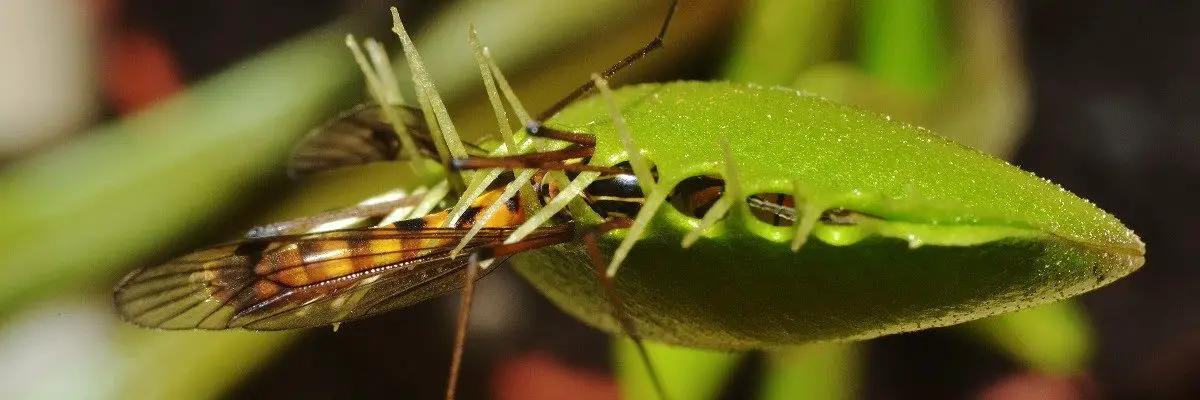Usually, carnivorous plants grow in marshes and bogs with thin soil or lack nutrients, which means they must eat animals and digest them for nutrients. Flying, crawling, or carnivorous plants most commonly eat foraging insects. Carnivorous plants that live near water can catch small water-based’s animals, such as mosquito larvae and small fish spawn. Carnivorous plants have been known to captured frogs, birds, and even rats.
It is estimated that there are Including subspecies. There are approximately 600 species of carnivorous plants, some of which have become extinct over the years. In contrast to ferns – which are nearly 400 million years old – carnivorous plants are much younger, likely originating between eight and 72 million years ago. Since then, species across the globe have used various strategies to utilize insects for nutrition. Most famous is the Venus flytrap because of its dynamic way of capturing its prey.
How did it develop the necessary skills when a plant felt it had to trade soil nutrients for animal byproducts? According to DNA analyses, the same genes that help other species protect themselves from predation also function in plants that eat prey.
It is still unclear which trait first evolved among carnivorous plants and when carnivorous plants started appearing. Genetically, carnivorous plants tend to be related – one genus, or group of relatives, might be exclusively composed of carnivorous plants.
How Do Carnivorous Plants Catching Their Prey?
As with plants that rely on insects to pollinate them, carnivorous plants use a range of approaches to attract insects for food. Several are scented, while others are colorful; others have sticky parts or slippery leaves or are designed to make it difficult for insects to get away. When they have lured an insect, the plants then use five simple strategies to trap them:
| Venus-flytraps (which snap shut to create a prison for plants); |
| Flypaper traps that employ sticky glue to catch unwary insects; |
| Plants that use pitfall traps (such as pitcher plants), where the insect tumbles into a pitcher-shaped leaf that contains digestive chemicals and bacteria on the bottom. |
| Water bladder traps that pull in water-based animals using a bladder; (Insects, small fish) |
| Traps that use inward-facing spines to force insects into the digestive chemicals, such as lobster-pot traps. |
There is a long history of fascination with Venus flytraps. How do the plants move? Is there muscle in them? Despite being the most common carnivorous plant, Venus flytraps are not the only moving plants. When prey touches the sensitive hairs on the outer edges of the leaves, the water diffuses to the outside of the trap, so the interior becomes soft. As a result, the leaf snaps shut. Carnivorous plants also move using their long flypaper traps, as seen in sundews. Once the insect gets stuck on the tentacles, they begin to grow quicker on the outside than on the interior, encloding the prey from all sides. They can accomplish this very quickly. In a few minutes, a sundew can move 180 degrees.
How do carnivorous plants digest their prey?
Carnivorous plants digest their food with enzymes. Several types of pitcher plants, such as Venus flytraps, butterworts, and sundews, produce digestive enzymes on their own. These enzymes assist the plants in processing their food. They only leave behind dead insect parts after digesting their insects.
Insects that are trapped rot and decompose inside the carnivorous plants. They do not produce the digestive juices of some carnivorous plants. The enzymes are produced by bacteria instead. As an example, Sarracenia uses both its own enzymes as well as enzymes produced by bacteria.
The symbiotic relationship between bacteria and plants occurs because the bacteria digest bug soup. In contrast, plants benefit from a conducive environmeTermites. For instance, have bacteria inside that assist in digesting wood. In contrast, humans have Escherichia coli (E. coli) in their intestines to assist in digesting food.
Can Carnivorous Plants Photosynthesize?
As with other plants, carnivorous plants produce glucose to make starches and cellulose, which are essential for their growth, structure, and survival. Through proper glucose production during photosynthesis, the plant will be able to adjust to environmental changes, fight off predators and diseases, continue to grow, and transport nutrients effectively.
Whether the plant is carnivorous or not, it would not survive without these processes. Any plant’s basic metabolic functions depend on this process and its chemicals.
While it is true that traps have led to a decrease in the ability of many carnivorous plants to photosynthesize, this is not always the case. Since most photosynthetic activity happens in the leaves, where the stomata are, modifying leaves for a new purpose. As a result of this predicament, carnivorous plants have developed some interesting adaptations.
In the end, even though carnivorous plants seem to be at a disadvantage as far as soil nutrients go, you can see the effect of their evolution even beyond their traps. Plants grow short and stout because their photosynthetic ability is distributed along with different parts of their leaves or even across separate leaves completely. It is often the case that the stems of carnivorous plants are long and thin so that they can maximize their growth using as few resources as possible.
Five Types Of Carnivorous Plants
Venus Flytrap
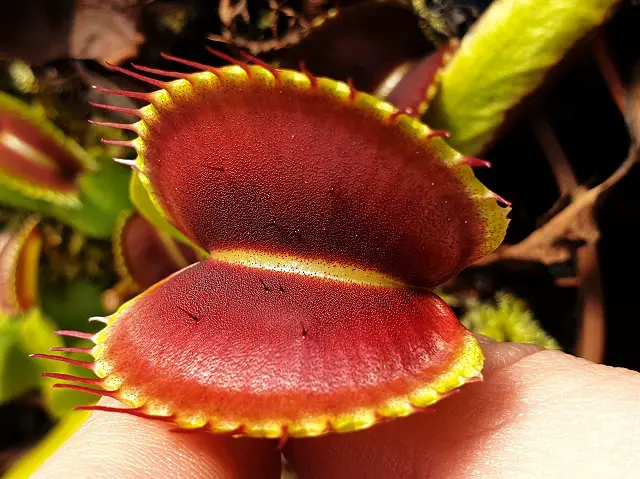
When people think of carnivorous plants, the Venus flytrap is usually the first species that comes to mind. An open leaf and fine hairs line the edges of the plant’s main part, forming into a sort of jaw with two open leaves. The flytrap snaps shut as soon as an insect touches the plant’s hairs and begins to digest its prey.
Sarracenia
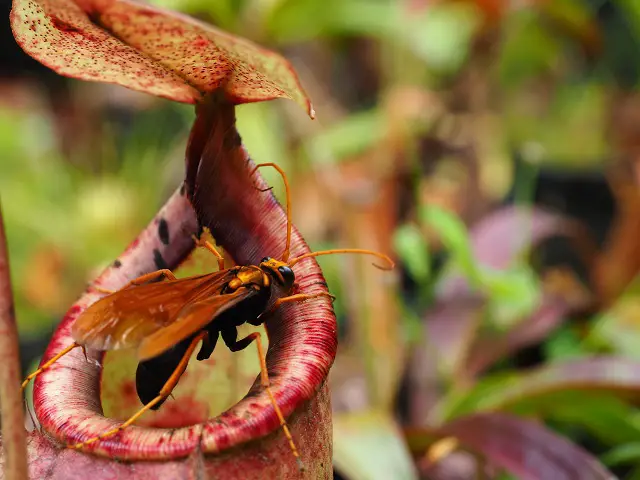
Sarracenia, also known as pitcher plants, are native to North America. As summer comes to an end, the Sarracenia’s foliage turns burgundy-red, which attracts flies. The fly plunges into the water within seconds of entering the hollow leaf and is subsequently trapped due to the pitcher’s steep sides and the slick, watery enzymes.
Drosera
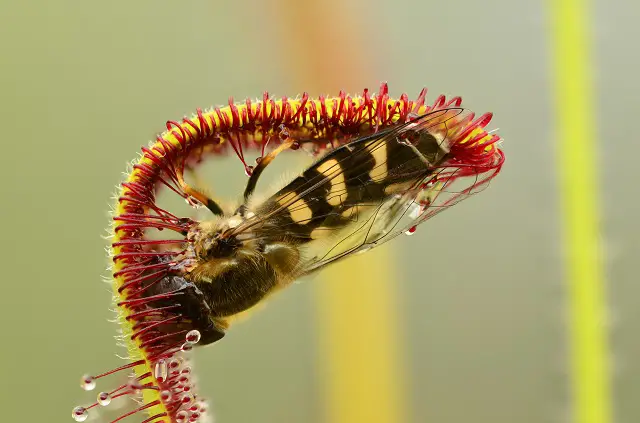
The Drosera genus is called sundews because its leaves are arranged in a circular pattern, similar to the sun’s rays, and appear covered in dew, attracting unsuspecting insects. This “dew” actually contains digestive enzymes. The plants in the Drosera family can capture and digest their prey.
Pinguicula
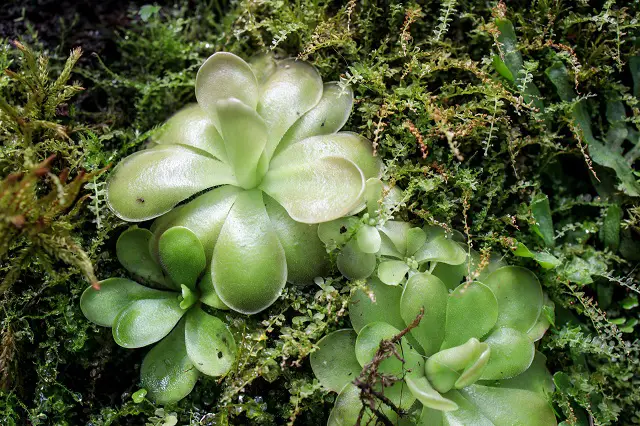
The pinguicula plant, known as butterwort, is a carnivorous plant that is similar to Drosera. Their leaves are sticky and dewy to trap their prey, like those of Drosera. The leaves of this carnivorous plant become sticky with dew when they are actively seeking prey. They become dormant when the winter season approaches, much like a succulent. When this happens, they no longer produce sticky enzymes.
Nepenthes
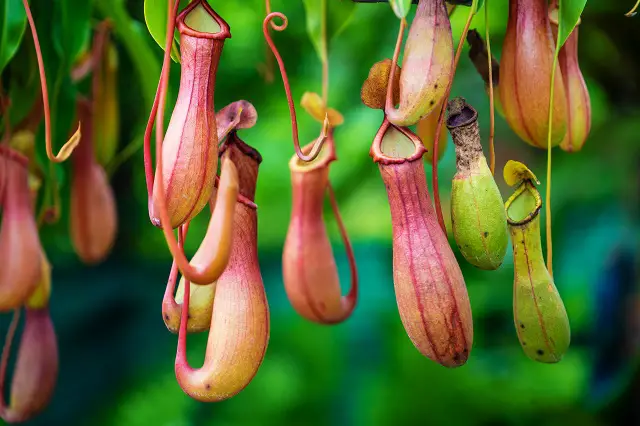
In addition to pitchers, Nepenthes also grow in tropical climates. Carnivorous plants like this one can be found in tropical regions throughout Asia, Australia, and Sri Lanka. The Nepenthes have pitchers formed as small buds containing liquid made by the plant. Attracted by the nectar’s aroma, insects and even small rodents will fall prey to its lure—a pitcher, also known as a monkey cup, senses movement. The plant begins its digestive process and releases powerful digestive fluids, allowing it to devour its prey.

